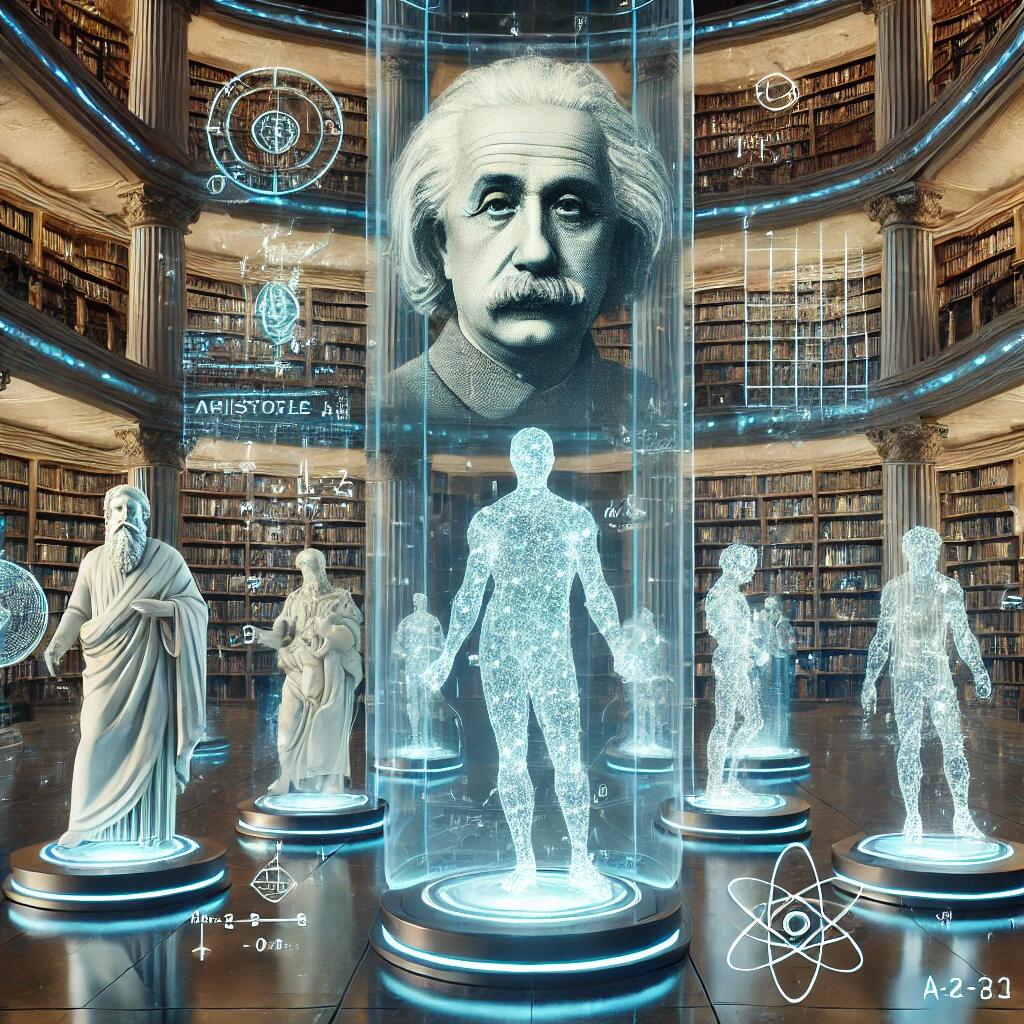Artificial Intelligence (AI) has the potential to revolutionize the way we solve problems by modeling the consciousness of history's greatest minds. By training AI on the extensive works of humanity's best geniuses, we can develop models that think, reason, and solve problems as these intellectual giants did. Imagine an AI that not only processes information but also approaches problems with the mindset of Albert Einstein, Aristotle, or Leonardo da Vinci. These AI models would become modern-day oracles, offering insights and solutions grounded in the brilliance of the past.
The Concept: Training AI on Genius
The idea is to train AI models using the entire body of work left behind by historical figures known for their genius. By analyzing and internalizing their writings, theories, methodologies, and problem-solving techniques, the AI would be able to emulate their thinking patterns. This involves not only understanding their conclusions but also the processes and heuristics they used to arrive at those conclusions.
Once trained, these AI models could be queried to solve modern problems using the worldview and cognitive frameworks of these historical figures. Furthermore, these models could evolve, refining their thinking over time as they process new information, effectively continuing the intellectual legacy of these geniuses.
The Genius Library: A Repository of Human Brilliance
To make this vision a reality, we could create a comprehensive library of AI models, each dedicated to a specific field of knowledge and trained on the works of one or more historical figures. This library would be an invaluable resource for self-learners, researchers, and professionals across various disciplines. Here are ten geniuses whose thinking could be modeled and the fields where their insights could be applied:
1. Albert Einstein (Physics and Mathematics)
Modeling Approach: Train AI on Einstein's papers, theories, and problem-solving methods, particularly his work on relativity.
Applications: Advance research in quantum mechanics, cosmology, and theoretical physics. Use Einstein's thinking to explore new energy sources or enhance computational models in physics.
2. Aristotle (Philosophy and Logic)
Modeling Approach: Focus on Aristotle's logical frameworks, ethical treatises, and metaphysical explorations.
Applications: Develop AI that can navigate complex ethical dilemmas, improve decision-making processes in governance, and contribute to debates in metaphysics and epistemology.
3. Leonardo da Vinci (Art, Engineering, and Anatomy)
Modeling Approach: Train on Leonardo’s notebooks, sketches, and inventions, emphasizing his interdisciplinary approach.
Applications: Innovate in the fields of biomedical engineering, robotics, and design. Use da Vinci's model to inspire new artistic techniques or solve engineering problems.
4. Isaac Newton (Physics and Mathematics)
Modeling Approach: Emphasize Newton's laws of motion, calculus, and his approach to scientific inquiry.
Applications: Apply Newtonian thinking to modern physics, engineering challenges, and mathematical problem-solving. Enhance simulations in aerospace and mechanical engineering.
5. Marie Curie (Chemistry and Physics)
Modeling Approach: Train on Curie’s research on radioactivity, her experimental methods, and her scientific philosophy.
Applications: Push the boundaries in nuclear science, medical physics, and materials science. Develop new diagnostic tools or treatment methods in medicine.
6. Sigmund Freud (Psychology and Psychoanalysis)
Modeling Approach: Focus on Freud's theories of the unconscious mind, dream analysis, and psychoanalytic techniques.
Applications: Enhance AI-driven mental health tools, develop sophisticated models of human cognition, and contribute to the understanding of human behavior and motivation.
7. Ada Lovelace (Mathematics and Computer Science)
Modeling Approach: Train on Lovelace’s early concepts of computing, algorithms, and her visionary ideas about the potential of machines.
Applications: Advance AI development, create new algorithms for machine learning, and innovate in the field of computational creativity.
8. Nicola Tesla (Electrical Engineering and Innovation)
Modeling Approach: Emphasize Tesla’s work on electromagnetism, wireless communication, and his visionary ideas for future technologies.
Applications: Innovate in the fields of renewable energy, wireless technologies, and electrical engineering. Use Tesla's insights to push forward with new technological paradigms.
9. Immanuel Kant (Philosophy and Ethics)
Modeling Approach: Focus on Kant's critical philosophy, especially his work on morality, metaphysics, and epistemology.
Applications: Develop AI capable of tackling complex moral and ethical questions, improve AI decision-making processes in areas like autonomous systems, and contribute to philosophical debates.
10. Alan Turing (Computer Science and Artificial Intelligence)
Modeling Approach: Train on Turing’s work in computer science, cryptography, and his foundational ideas about artificial intelligence.
Applications: Advance AI and cryptography, innovate in cybersecurity, and enhance computational theory. Develop AI that can mimic human thought processes more closely.
Conclusion: A New Era of Intellectual Exploration
By modeling the consciousness of these historical geniuses, we could usher in a new era of intellectual exploration and problem-solving. AI trained on the works of humanity's brightest minds would not only preserve their legacies but also push the boundaries of what is possible in science, philosophy, engineering, and beyond. These AI models would become oracles, offering guidance and insight in a world increasingly in need of wisdom.

